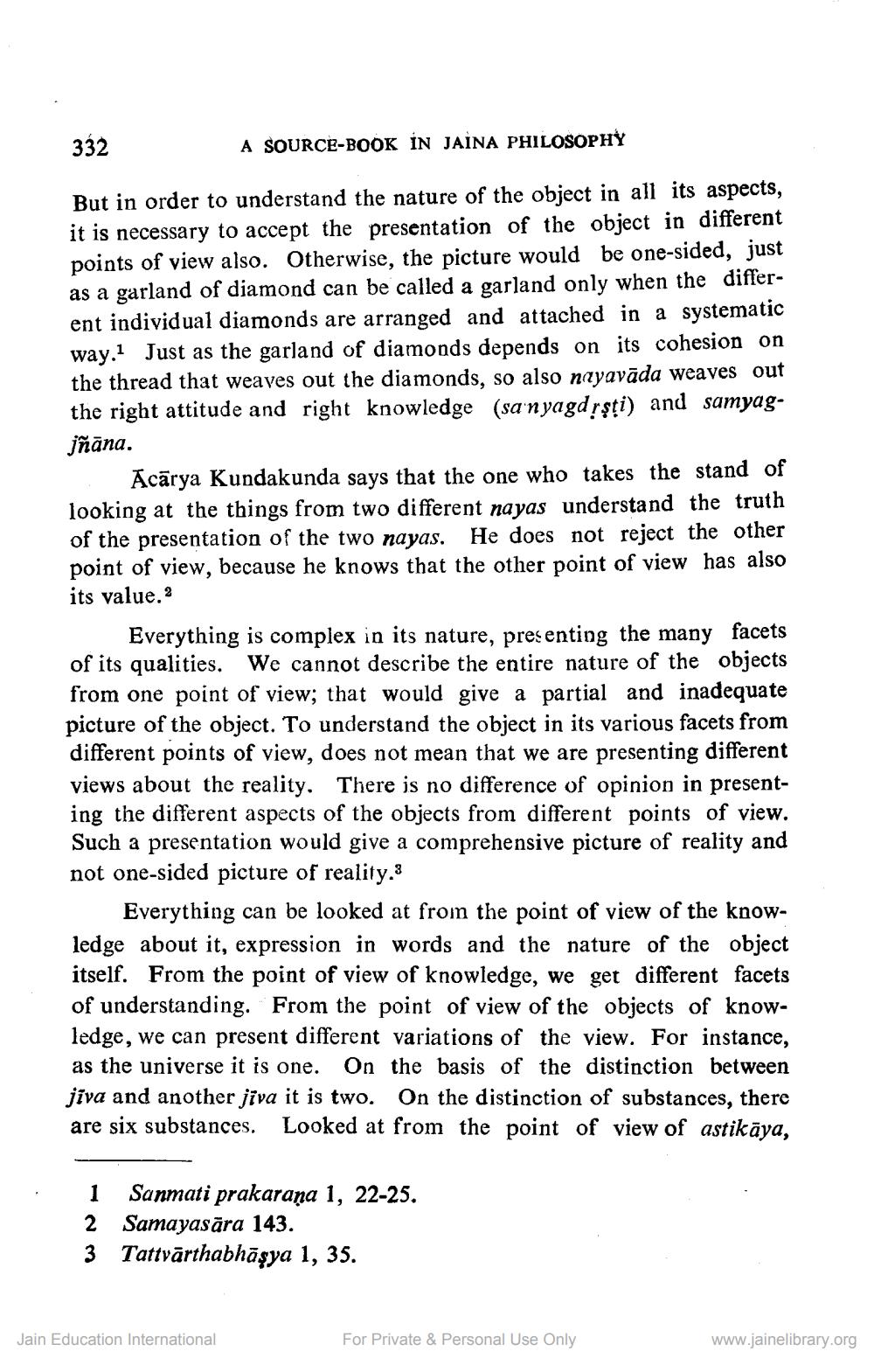________________
332
A SOURCE-BOOK IN JAINA PHILOSOPHY
But in order to understand the nature of the object in all its aspects, it is necessary to accept the presentation of the object in different points of view also. Otherwise, the picture would be one-sided, just as a garland of diamond can be called a garland only when the different individual diamonds are arranged and attached in a systematic way.1 Just as the garland of diamonds depends on its cohesion on the thread that weaves out the diamonds, so also nnyavāda weaves out the right attitude and right knowledge (sa'nyagd rşti) and samyagjñāna.
Acārya Kundakunda says that the one who takes the stand of looking at the things from two different nayas understand the truth of the presentation of the two nayas. He does not reject the other point of view, because he knows that the other point of view has also its value.
Everything is complex in its nature, presenting the many facets of its qualities. We cannot describe the entire nature of the objects from one point of view; that would give a partial and inadequate picture of the object. To understand the object in its various facets from different points of view, does not mean that we are presenting different views about the reality. There is no difference of opinion in presenting the different aspects of the objects from different points of view. Such a presentation would give a comprehensive picture of reality and not one-sided picture of reality.3
Everything can be looked at from the point of view of the knowledge about it, expression in words and the nature of the object itself. From the point of view of knowledge, we get different facets of understanding. From the point of view of the objects of knowledge, we can present different variations of the view. For instance, as the universe it is one. On the basis of the distinction between jiva and another jiva it is two. On the distinction of substances, there are six substances. Looked at from the point of view of astikāya,
1 2 3
Sanmati prakarana 1, 22-25. Samayasāra 143. Tattvārthabhāşya 1, 35.
Jain Education International
For Private & Personal Use Only
www.jainelibrary.org




